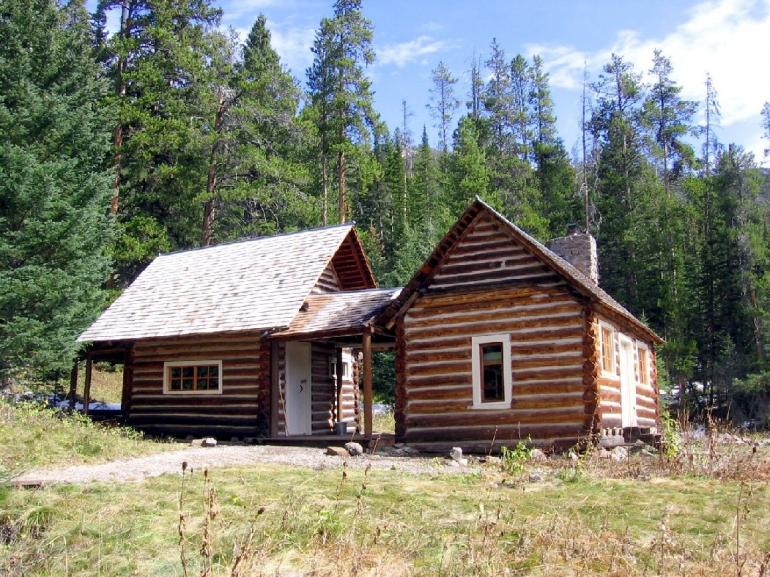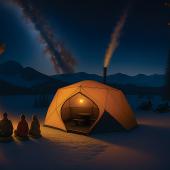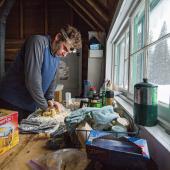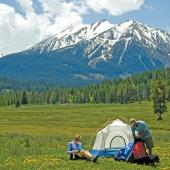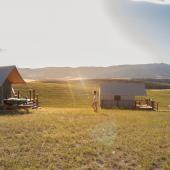Rustic Retreats
Ranger cabins for every mood.
Ranger cabins have a long and illustrious record in southwestern Montana. They once housed very lonely rangers who did lots of scientific work and occasionally single-handedly fought raging forest fires. Now they house a variety of adventure-seekers who are more self-serving than the original residents. Usually composed of logs with built-in bunk beds, a woodburning stove, and an outhouse, each cabin is unique and welcoming after a long hike.
For the Romantics
Garnet Mountain has a lookout cabin, and the sight is worth the four-mile uphill hike. A friend of mine was going to propose there (he didn’t—forgot the ring), and it’s a spot that does the momentous event justice. Bring a bottle of wine and maybe some salmon steaks to sear on the stove that doubles as your only source of heat. A gallon or two of water will add to your pack’s weight but also to your chances of having an enjoyable stay; there’s no water up top, so remember to bring enough for all your needs. The walls are all glass, and the views of the night sky rival the sweeping vistas of the day.
For the Hardy
Ibex Cabin is up in the Crazies, and sometimes it feels like the area is appropriately named. A haven for snowmobiles in the winter and four-wheelers in the summer, the place served as a perfect boys’ weekend-away location for my husband and some friends when a freak storm blew in several feet of snow and kept the springtime jolly-searchers off of this more-than-beaten trail. With a wood stove and propane lantern, it’s still one of the most rustic out there, but check on availability—it’s not always open to the public.
For the Larger Group
Although most cabins sleep four or five, mostly with built-in bunks (but plenty of extra floor space), the Big Creek Cabin south of Livingston sleeps 10, and you can sometimes drive right up to it in the summer, with the right SUV. It’s nice to bunk together without making anyone sleep on the floor, and its close proximity to the road in the summer (only a half-mile in the winter, via Nordic skis or snowshoes) means that the extra water the adults trek in won’t be that hard on the back.
One of the most important reminders about staying in a ranger cabin is that you should treat it as you would any campsite: leave it better than when you arrived. If there’s a woodburning stove, chop more firewood than you use so there’s plenty for the next group. Leave a good entry in the cabin’s journal (kids read these—and leave some of the most amusing ones), report any problems to the ranger district, and even though it may seem like a kind gesture to leave a box of saltines for the next group, avoid the temptation to encourage mice (and the Hanta virus), and take it all with you when you leave.
Check with either the Bozeman or Livingston Ranger District or visit fs.fed.us/r1/gallatin to get a copy of the Northern Region Recreational Cabin and Lookout directory, which will give specifics on the 20-plus cabins available in the Gallatin National Forest. Unless you sign up at the last minute (two days before your intended stay), you’ll have to register online at reserveusa.com or by calling 800-444-6777. Most of the cabins run about $30 a night plus a processing fee courtesy of the current Presidential administration’s efforts to streamline the National Forest services.

